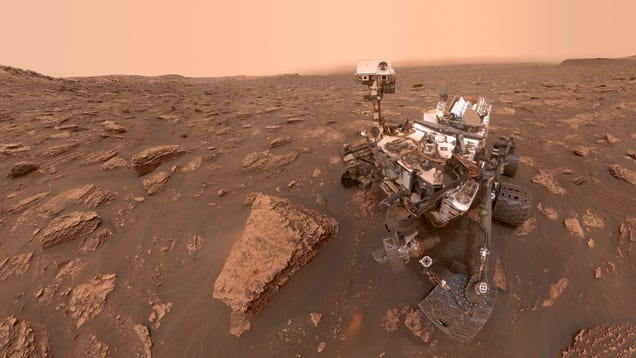The Journey of NASA’s Curiosity Rover: A Decade of Discovery on Mars
Understanding the Significance of Curiosity’s Mission
Since its landing on Mars in August 2012, NASA’s Curiosity rover has been a cornerstone of planetary exploration, providing invaluable insights into the Martian environment. The mission’s primary goal was to assess whether Mars ever had conditions suitable for life, and over the past decade, Curiosity has exceeded expectations. By analyzing soil samples, studying rock formations, and measuring atmospheric conditions, the rover has painted a picture of a planet that once had water and potentially habitable environments.
Curiosity’s achievements are not just about scientific discovery; they also serve as a testament to human ingenuity and the relentless pursuit of knowledge. As we reflect on its journey, it’s essential to consider the broader implications of its findings and how they shape our understanding of Mars and the potential for life beyond Earth.
Exploring the Martian Landscape: Key Discoveries
Curiosity has traversed over 20 miles of the Martian surface, a feat that has not come without challenges. The harsh terrain, characterized by rocky outcrops and fine dust, has tested the rover’s engineering. Despite these obstacles, Curiosity has made significant discoveries that have transformed our understanding of Mars.
One of the most notable findings is the evidence of ancient riverbeds and lakebeds, suggesting that liquid water once flowed on the planet’s surface. This discovery is critical because water is a fundamental ingredient for life as we know it. Additionally, Curiosity has detected organic molecules in Martian soil, which are the building blocks of life. These findings have sparked interest and debate among scientists regarding the possibility of past microbial life on Mars.
The rover’s ability to analyze the planet’s atmosphere has also provided insights into its climate history. For instance, Curiosity has measured methane levels, which fluctuate seasonally. While methane can be produced by biological processes, it can also arise from geological activity. This duality keeps the scientific community engaged in ongoing research to determine the source of this gas.
Challenges and Triumphs: The Engineering Behind Curiosity
The engineering of the Curiosity rover is a marvel in itself. Designed to withstand the harsh Martian environment, it is equipped with advanced scientific instruments and a robust mobility system. However, the journey has not been without its challenges. The rover’s wheels have suffered significant wear and tear due to the abrasive Martian terrain, leading to concerns about its longevity.
NASA engineers have been proactive in addressing these issues. They have developed strategies to mitigate wheel damage, such as adjusting Curiosity’s driving patterns and selecting less hazardous routes. These engineering solutions highlight the importance of adaptability in space exploration, ensuring that the rover can continue its mission despite the challenges it faces.
The Future of Mars Exploration: What Lies Ahead?
As Curiosity approaches its 12th anniversary on Mars, the question arises: what comes next? NASA’s ongoing commitment to Mars exploration includes plans for future missions, such as the Mars Sample Return mission, which aims to bring Martian soil samples back to Earth for detailed analysis. This mission could provide answers to lingering questions about the planet’s potential for life and its geological history.
Moreover, the insights gained from Curiosity’s mission will inform the design and objectives of upcoming rovers and landers. For instance, the Perseverance rover, which landed on Mars in February 2021, is specifically tasked with searching for signs of ancient life and collecting samples for future return missions. The synergy between these missions underscores the collaborative nature of space exploration and the shared goal of uncovering the mysteries of our solar system.
Engaging the Public: The Role of Citizen Science
The journey of the Curiosity rover has not only captivated scientists but has also engaged the public in the exploration of Mars. NASA has leveraged social media and interactive platforms to share updates, images, and findings from the rover’s mission. This transparency fosters a sense of connection between the public and the scientific community, inspiring future generations to pursue careers in STEM fields.
Citizen science initiatives, such as the Mars Rover Curiosity Challenge, encourage individuals to contribute to data analysis and interpretation. By involving the public in scientific research, NASA not only broadens the scope of its mission but also democratizes the process of discovery, making science accessible to everyone.
In summary, the journey of NASA’s Curiosity rover is a remarkable tale of exploration, discovery, and resilience. As it continues to traverse the Martian landscape, Curiosity remains a symbol of human curiosity and the quest for knowledge. The insights gained from its mission will undoubtedly shape our understanding of Mars and the potential for life beyond our planet for years to come.

